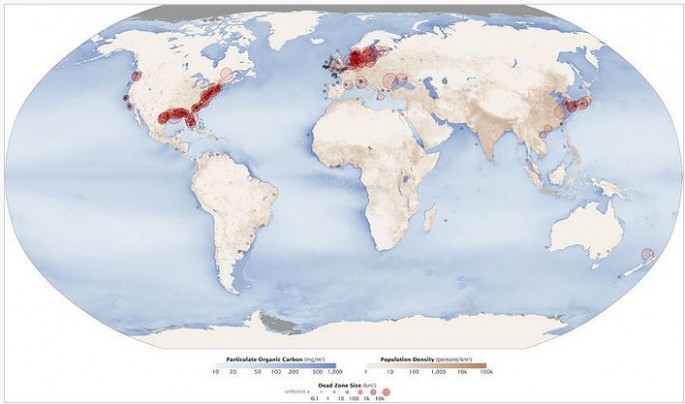In an alarming discovery, marine biologists said they've confirmed the existence of "dead zones" in the open ocean for the first time.
Dead zones are areas where deep water is so lacking in dissolved oxygen that marine creatures can't survive.
Dead zones are normally found along inhabited coastal areas, with many located off the eastern and southern coasts of the United States and the Baltic Sea. Most of these coastal dead zones are caused by fertilizer run-offs and man-made pollution that trigger massive algal blooms.
German and Canadian researchers discovered the first deep ocean dead zones less than 100 kilometers from the Cape Verde archipelago in the Atlantic Ocean off West Africa in huge whirlpools moving along the Atlantic.
They said the slowly moving whirlpools could trigger massive fish kills and economic ruin among Western African countries.
"It is not unlikely that an open-ocean dead zone will hit the (Cape Verde) islands at some point," said Dr. Johannes Karstensen of the GEOMAR Helmholtz Centre for Ocean Research Kiel and lead author of the study published in the journal, Biogeosciences.
Dr. Karstensen explained the dead zones are located inside ocean whirlpools or spinning cylinders of ocean and has a size of 150 kilometers across and several hundred meters deep.
The whirlpool or eddy was formed when a current along the West African coast became unstable and was pushed slowly westward by the Earth's rotation, said Weather.com.
Dr. Karstensen said oxygen concentrations in the dead zone are up to 20 times lower than the previously recorded minimums in the North Atlantic, making the areas uninhabitable to all marine life other than a few microorganisms.
Coastal dead zones are formed when bacteria consume the oxygen as they eat dead algae sinking towards the sea floor. Dr Karstensen said the deep ocean zones appear to be operating in a similar manner.
The alarming discovery of the first open ocean dead zone is increasing concerns warming oceans might trigger an increase in the more than 400 known dead zones worldwide.
The size and number of marine dead zones have grown explosively over the past half-century.



























